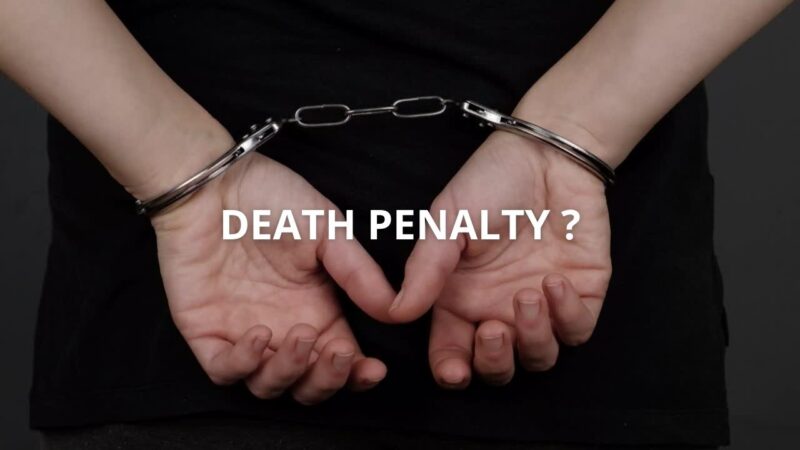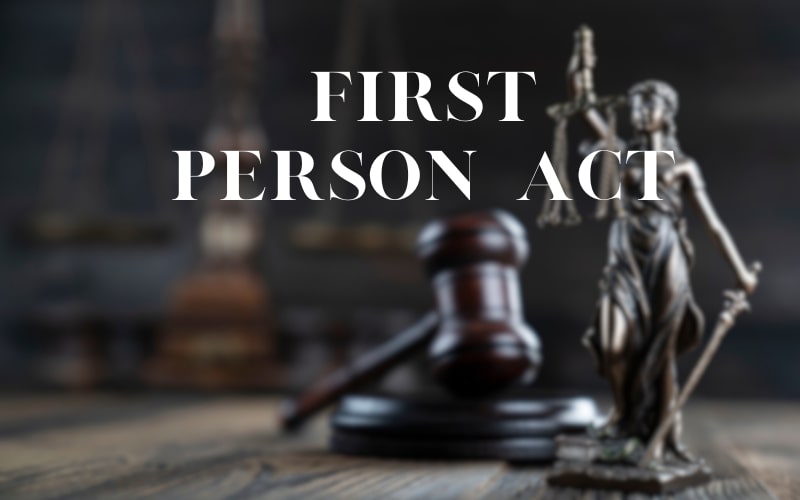The First Person Act is a groundbreaking piece of legislation that has significantly impacted the justice system. This act, passed in the United States, has been a beacon of hope for many who have long advocated for criminal justice reform.
We will talk about the Act’s origins, its key provisions, and the real-world effects it has had on the justice system and the people it serves, trying to make the complex world of criminal justice legislation accessible to all
Key Provisions
The First Person Act is a comprehensive piece of legislation with numerous provisions. These provisions aim to address various aspects of the justice system, from sentencing to rehabilitation. Understanding these provisions is crucial to appreciating the Act’s impact and its potential for future reform.
Sentencing Reforms
One of the most significant aspects of the First Person Act is its sentencing reforms. The Act aims to reduce the prison population by revising mandatory minimum sentences for certain non-violent offenses.
This is a significant departure from previous policies, which often mandated harsh sentences for non-violent offenses, contributing to the high incarceration rate. These reforms are intended to address the issue of over-incarceration, particularly for non-violent offenses.
By reducing mandatory minimums, the Act gives judges more discretion in sentencing, allowing them to consider the individual circumstances of each case. This shift toward a more individualized approach to sentencing is a significant step toward creating a more equitable justice system.
Rehabilitation and Reentry Programs
The First Person Act is for programs that help inmates prepare for life after prison, including job training, education, and mental health services.
This focus on rehabilitation represents a significant shift in the approach to criminal justice, moving away from a purely punitive approach towards one that also places a strong emphasis on rehabilitation and reentry programs. It provides funding at aims to help individuals reintegrate into society.
These programs are designed to reduce recidivism rates by providing inmates with the tools they need to succeed outside of prison. By focusing on rehabilitation over punishment, the Act aims to create a more effective and humane justice system.
This shift towards rehabilitation is not only beneficial for individuals but also for society as a whole, as it helps to reduce crime rates and create safer communities.
The Impact of the First Person Act on the Justice System

The First Person Act has had a profound impact on the justice system. Its provisions have led to significant changes in sentencing, incarceration rates, and the focus on rehabilitation. In this section, we will explore the real-world effects of the Act on the justice system.
By examining these impacts, we can gain a deeper understanding of the Act’s significance and its potential for future reform.
Changes in Sentencing
The sentencing reforms in the First Person Act have led to significant changes in the justice system. Judges now have more discretion in sentencing for certain non-violent offenses, leading to more equitable outcomes. This shift has allowed for a more individualized approach to sentencing, taking into account the unique circumstances of each case.
These changes have also led to a reduction in the prison population. Since the Act’s passage, the number of people serving time for non-violent offenses has decreased significantly, helping to address the issue of over-incarceration.
This reduction in the prison population is a significant achievement, signaling a move towards a more balanced and fair justice system.
Reduction in Recidivism Rates
The First Person Act’s emphasis on rehabilitation and reentry programs has also had a significant impact. These programs have provided inmates with the tools they need to succeed after prison, leading to a reduction in recidivism rates.
This reduction is a testament to the effectiveness of these programs and the Act’s focus on rehabilitation. This shift towards rehabilitation over punishment has not only benefited individuals but also society as a whole.
By reducing recidivism rates, the Act has helped to create safer communities and reduce the overall cost of the justice system. This shift represents a significant step towards a more effective and sustainable approach to criminal justice.
The Genesis of the Act

The First Person Act didn’t materialize out of thin air. It was the result of years of advocacy, research, and legislative effort.
Societal Context
This law was born out of a growing recognition of the need for criminal justice reform. The United States has the highest incarceration rate in the world, with over 2 million people behind bars. This high rate of incarceration, coupled with systemic issues such as racial disparities in sentencing, led to a widespread call for change.
The public outcry for reform was loud and clear, and the First Person Act was a response to these calls. The Act was designed to address some of the most pressing issues in the justice system. It was designed to reduce the prison population, promote rehabilitation over punishment, and create a more equitable justice system.
The Act was a significant step toward addressing these systemic issues and creating a justice system that is fair and just for all.
Key Players
The passage of the act was a two-way effort, with lawmakers from both sides of the aisle recognizing the need for reform. Key players included legislators, advocacy groups, and individuals who had been personally affected by the justice system.
These individuals and groups brought a diverse range of perspectives and experiences to the table, contributing to the Act’s comprehensive and nuanced approach to reform. These individuals and groups worked tirelessly to draft the Act, lobby for its passage, and ensure its implementation.
The Future of the First-Person Act

The First Person Act has already had a significant impact on the justice system, but its journey is far from over. In this section, we will explore the future of the Act, including potential amendments, challenges, and its long-term implications for the justice system.
By looking toward the future, we can gain insights into the potential for further reform and the continued evolution of the justice system.
Potential Amendments
While the First Person Act has been largely successful, there is still room for improvement. Lawmakers and advocacy groups are already working on potential amendments to the Act, aiming to address any shortcomings and further improve the justice system.
These amendments could include expanding the Act’s sentencing reforms, increasing funding for rehabilitation programs, and addressing any unintended consequences of the Act. These potential amendments represent an opportunity for continued reform and improvement.
They signal a commitment to ongoing progress and a willingness to adapt and evolve in response to new information and changing circumstances. This commitment to continuous improvement is a promising sign for the future of criminal justice reform.
Long-term Implications
The First Person Act represents a significant shift in the approach to criminal justice in the United States. Its emphasis on rehabilitation over punishment, its sentencing reforms, and its focus on reducing recidivism rates all signal a move towards a more equitable and effective justice system.
In the long term, the Act could lead to further reforms in the justice system, setting a precedent for future legislation. Its success could also inspire other countries to adopt similar reforms, potentially leading to a global shift in the approach to criminal justice.
The First Person Act could be just the beginning of a broader movement towards a more equitable and effective approach to criminal justice.
FAQs:

Does the First Person Act affect the death penalty?
It could potentially affect the death penalty if it includes provisions related to capital punishment, such as changes to sentencing guidelines or the methods of execution.
What’s the impact of the Act on sentencing guidelines?
The impact of the law on sentencing guidelines would depend on the specific provisions of the Act. It could potentially introduce changes to mandatory minimum sentences, guidelines for non-violent offenses, or other aspects of sentencing
Does it apply to the rights of individuals with mental health issues in the justice system?
This law could affect the rights of individuals with mental health issues if it includes provisions related to the treatment of mentally ill offenders, such as changes to sentencing guidelines or mental health diversion programs.
Does this law address the issue of racial disparities?
While not the sole focus, the Act’s provisions may indirectly contribute to reducing racial disparities by addressing sentencing reforms and rehabilitation.
What is the significance of bipartisan support for the First Step Act?
Bipartisan support signifies that lawmakers from both major political parties found common ground on the need for criminal justice reform and indicates a broader consensus on its importance.
Conclusion
The impact of this law has been profound, leading to more equitable sentencing, a reduction in the prison population, and a shift towards rehabilitation over punishment.
The First Person Act was born out of a recognition of the need for criminal justice reform. Its key provisions aim to address over-incarceration, racial disparities in sentencing, and the lack of focus on rehabilitation in the justice system.
The Act represents a significant step toward a more equitable and effective justice system, and its impact has been significant. These changes represent a significant shift in the approach to criminal justice, moving away from a purely punitive approach towards one that emphasizes rehabilitation and reintegration.
The journey of the First Person Act is far from over. There is still room for improvement, and lawmakers and advocacy groups are already working on potential amendments to the Act. These potential amendments represent an opportunity for continued progress and further reform.
